#chestnut health benefits
Text

In this blog, we'll dive into the nutritional benefits of water chestnuts. From their high fiber content to their impressive vitamin and mineral profile, these versatile vegetables are packed with nutrients that can support overall health.
#water chestnuts nutrition#water cashew nut#water chestnut benefits#benefits of chestnuts#chestnut health benefits#chestnut benefits#are chestnuts good for you#chestnut nutritional value#chestnuts carbs#are chestnuts healthy#what are chestnuts
0 notes
Text
Singhada ke fayde Benefits of Water chestnuts #shorts #health #singhade #singhada #waterchestnut
0 notes
Text
Is it Safe to Eat Chestnuts During Pregnancy?
Incorporating chestnuts during pregnancy into your diet can be a delightful and nutritious choice. Packed with vitamins, minerals, and fiber, they offer a wholesome addition to support your well-being. Before enjoying this tasty treat, consult your healthcare provider for nut-related concerns or allergies.
What are Chestnuts?
Chestnuts are a type of nut from various species of trees in the…

View On WordPress
#Are Chestnuts Good For You?#Benefits of Chestnuts During Pregnancy#benefits of water chestnut#benefits of water chestnut during pregnancy#benefits of water chestnuts during pregnancy#best nuts to eat during pregnancy#best time to eat nuts during pregnancy#Chestnuts for Female Fertility#Chestnuts Recipes#Eating Chestnuts Everday during Pregnancy#Eating Raw Chestnuts During Pregnancy#Eating Roasted Chestnuts during Pregnancy: Is it Safe?#Eating Too Many Chestnuts During Pregnancy#foods to eat during pregnancy#health benefits of water chestnut#How Many Chestnuts Eat a Day?#How to Roast Chestnuts?#Is it Safe to Eat Chestnuts During Pregnancy?#nutrition during pregnancy#Nutrition of Chestnuts#pregnancy#seeds during pregnancy#water chestnut#water chestnut benefits#water chestnut during pregnancy#water chestnut health benefits#water chestnuts#waterchestnut during pregnancy#What are Chestnuts?
0 notes
Text
America's largest hospital chain has an algorithmic death panel

It’s not that conservatives aren’t sometimes right — it’s that even when they’re right, they’re highly selective about it. Take the hoary chestnut that “incentives matter,” trotted out to deny humane benefits to poor people on the grounds that “free money” makes people “workshy.”
There’s a whole body of conservative economic orthodoxy, Public Choice Theory, that concerns itself with the motives of callow, easily corrupted regulators, legislators and civil servants, and how they might be tempted to distort markets.
But the same people who obsess over our fallible public institutions are convinced that private institutions will never yield to temptation, because the fear of competition keeps temptation at bay. It’s this belief that leads the right to embrace monopolies as “efficient”: “A company’s dominance is evidence of its quality. Customers flock to it, and competitors fail to lure them away, therefore monopolies are the public’s best friend.”
But this only makes sense if you don’t understand how monopolies can prevent competitors. Think of Uber, lighting $31b of its investors’ cash on fire, losing 41 cents on every dollar it brought in, in a bid to drive out competitors and make public transit seem like a bad investment.
Or think of Big Tech, locking up whole swathes of your life inside their silos, so that changing mobile OSes means abandoning your iMessage contacts; or changing social media platforms means abandoning your friends, or blocking Google surveillance means losing your email address, or breaking up with Amazon means losing all your ebooks and audiobooks:
https://www.eff.org/deeplinks/2021/08/facebooks-secret-war-switching-costs
Businesspeople understand the risks of competition, which is why they seek to extinguish it. The harder it is for your customers to leave — because of a lack of competitors or because of lock-in — the worse you can treat them without risking their departure. This is the core of enshittification: a company that is neither disciplined by competition nor regulation can abuse its customers and suppliers over long timescales without losing either:
https://pluralistic.net/2023/01/21/potemkin-ai/#hey-guys
It’s not that public institutions can’t betray they public interest. It’s just that public institutions can be made democratically accountable, rather than financially accountable. When a company betrays you, you can only punish it by “voting with your wallet.” In that system, the people with the fattest wallets get the most votes.
When public institutions fail you, you can vote with your ballot. Admittedly, that doesn’t always work, but one of the major predictors of whether it will work is how big and concentrated the private sector is. Regulatory capture isn’t automatic: it’s what you get when companies are bigger than governments.
If you want small governments, in other words, you need small companies. Even if you think the only role for the state is in enforcing contracts, the state needs to be more powerful than the companies issuing those contracts. The bigger the companies are, the bigger the government has to be:
https://doctorow.medium.com/regulatory-capture-59b2013e2526
Companies can suborn the government to help them abuse the public, but whether public institutions can resist them is more a matter of how powerful those companies are than how fallible a public servant is. Our plutocratic, monopolized, unequal society is the worst of both worlds. Because companies are so big, they abuse us with impunity — and they are able to suborn the state to help them do it:
https://www.cambridge.org/core/journals/perspectives-on-politics/article/testing-theories-of-american-politics-elites-interest-groups-and-average-citizens/62327F513959D0A304D4893B382B992B
This is the dimension that’s so often missing from the discussion of why Americans pay more for healthcare to get worse outcomes from health-care workers who labor under worse conditions than their cousins abroad. Yes, the government can abet this, as when it lets privatizers into the Medicare system to loot it and maim its patients:
https://prospect.org/health/2023-08-01-patient-zero-tom-scully/
But the answer to this isn’t more privatization. Remember Sarah Palin’s scare-stories about how government health care would have “death panels” where unaccountable officials decided whether your life was worth saving?
https://pubmed.ncbi.nlm.nih.gov/26195604/
The reason “death panels” resounded so thoroughly — and stuck around through the years — is that we all understand, at some deep level, that health care will always be rationed. When you show up at the Emergency Room, they have to triage you. Even if you’re in unbearable agony, you might have to wait, and wait, and wait, because other people (even people who arrive after you do) have it worse.
In America, health care is mostly rationed based on your ability to pay. Emergency room triage is one of the only truly meritocratic institutions in the American health system, where your treatment is based on urgency, not cash. Of course, you can buy your way out of that too, with concierge doctors. And the ER system itself has been infested with Private Equity parasites:
https://pluralistic.net/2022/11/17/the-doctor-will-fleece-you-now/#pe-in-full-effect
Wealth-based health-care rationing is bad enough, but when it’s combined with the public purse, a bad system becomes a nightmare. Take hospice care: private equity funds have rolled up huge numbers of hospices across the USA and turned them into rigged — and lethal — games:
https://pluralistic.net/2023/04/26/death-panels/#what-the-heck-is-going-on-with-CMS
Medicare will pay a hospice $203-$1,462 to care for a dying person, amounting to $22.4b/year in public funds transfered to the private sector. Incentives matter: the less a hospice does for their patients, the more profits they reap. And the private hospice system is administered with the lightest of touches: at the $203/day level, a private hospice has no mandatory duties to their patients.
You can set up a California hospice for the price of a $3,000 filing fee (which is mostly optional, since it’s never checked). You will have a facility inspection, but don’t worry, there’s no followup to make sure you remediate any failing elements. And no one at the Centers for Medicare & Medicaid Services tracks complaints.
So PE-owned hospices pressure largely healthy people to go into “hospice care” — from home. Then they do nothing for them, including continuing whatever medical care they were depending on. After the patient generates $32,000 in billings for the PE company, they hit the cap and are “live discharged” and must go through a bureaucratic nightmare to re-establish their Medicare eligibility, because once you go into hospice, Medicare assumes you are dying and halts your care.
PE-owned hospices bribe doctors to refer patients to them. Sometimes, these sham hospices deliberately induce overdoses in their patients in a bid to make it look like they’re actually in the business of caring for the dying. Incentives matter:
https://www.newyorker.com/magazine/2022/12/05/how-hospice-became-a-for-profit-hustle
Now, hospice care — and its relative, palliative care — is a crucial part of any humane medical system. In his essential book, Being Mortal, Atul Gawande describes how end-of-life care that centers a dying person’s priorities can make death a dignified and even satisfying process for the patient and their loved ones:
https://atulgawande.com/book/being-mortal/
But that dignity comes from a patient-centered approach, not a profit-centered one. Doctors are required to put their patients’ interests first, and while they sometimes fail at this (everyone is fallible), the professionalization of medicine, through which doctors were held to ethical standards ahead of monetary considerations, proved remarkable durable.
Partly that was because doctors generally worked for themselves — or for other doctors. In most states, it is illegal for medical practices to be owned by non-MDs, and historically, only a small fraction of doctors worked for hospitals, subject to administration by businesspeople rather than medical professionals.
But that was radically altered by the entry of private equity into the medical system, with the attending waves of consolidation that saw local hospitals merged into massive national chains, and private practices scooped up and turned into profit-maximizers, not health-maximizers:
https://prospect.org/health/2023-08-02-qa-corporate-medicine-destroys-doctors/
Today, doctors are being proletarianized, joining the ranks of nurses, physicians’ assistants and other health workers. In 2012, 60% of practices were doctor-owned and only 5.6% of docs worked for hospitals. Today, that’s up by 1,000%, with 52.1% of docs working for hospitals, mostly giant corporate chains:
https://prospect.org/health/2023-08-04-when-mds-go-union/
The paperclip-maximizing, grandparent-devouring transhuman colony organism that calls itself a Private Equity fund is endlessly inventive in finding ways to increase its profits by harming the rest of us. It’s not just hospices — it’s also palliative care.
Writing for NBC News, Gretchen Morgenson describes how HCA Healthcare — the nation’s largest hospital chain — outsourced its death panels to IBM Watson, whose algorithmic determinations override MDs’ judgment to send patients to palliative care, withdrawing their care and leaving them to die:
https://www.nbcnews.com/health/health-care/doctors-say-hca-hospitals-push-patients-hospice-care-rcna81599
Incentives matter. When HCA hospitals send patients to die somewhere else to die, it jukes their stats, reducing the average length of stay for patients, a key metric used by HCA that has the twin benefits of making the hospital seem like a place where people get well quickly, while freeing up beds for more profitable patients.
Goodhart’s Law holds that “When a measure becomes a target, it ceases to be a good measure.” Give an MBA within HCA a metric (“get patients out of bed quicker”) and they will find a way to hit that metric (“send patients off to die somewhere else, even if their doctors think they could recover”):
https://en.wikipedia.org/wiki/Goodhart%27s_law
Incentives matter! Any corporate measure immediately becomes a target. Tell Warners to decrease costs, and they will turn around and declare the writers’ strike to be a $100m “cost savings,” despite the fact that this “savings” comes from ceasing production on the shows that will bring in all of next year’s revenue:
https://deadline.com/2023/08/warner-bros-discovery-david-zaslav-gunnar-wiedenfels-strikes-1235453950/
Incentivize a company to eat its seed-corn and it will chow down.
Only one of HCA’s doctors was willing to go on record about its death panels: Ghasan Tabel of Riverside Community Hospital (motto: “Above all else, we are committed to the care and improvement of human life”). Tabel sued Riverside after the hospital retaliated against him when he refused to follow the algorithm’s orders to send his patients for palliative care.
Tabel is the only doc on record willing to discuss this, but 26 other doctors talked to Morgenson on background about the practice, asking for anonymity out of fear of retaliation from the nation’s largest hospital chain, a “Wall Street darling” with $5.6b in earnings in 2022.
HCA already has a reputation as a slaughterhouse that puts profits before patients, with “severe understaffing”:
https://www.nbcnews.com/health/health-news/workers-us-hospital-giant-hca-say-puts-profits-patient-care-rcna64122
and rotting, undermaintained facililties:
https://www.nbcnews.com/health/health-care/roaches-operating-room-hca-hospital-florida-rcna69563
But while cutting staff and leaving hospitals to crumble are inarguable malpractice, the palliative care scam is harder to pin down. By using “AI” to decide when patients are beyond help, HCA can employ empiricism-washing, declaring the matter to be the factual — and unquestionable — conclusion of a mathematical process, not mere profit-seeking:
https://pluralistic.net/2023/07/26/dictators-dilemma/ggarbage-in-garbage-out-garbage-back-in
But this empirical facewash evaporates when confronted with whistleblower accounts of hospital administrators who have no medical credentials berating doctors for a “missed hospice opportunity” when a physician opts to keep a patient under their care despite the algorithm’s determination.
This is the true “AI Safety” risk. It’s not that a chatbot will become sentient and take over the world — it’s that the original artificial lifeform, the limited liability company, will use “AI” to accelerate its murderous shell-game until we can’t spot the trick:
https://pluralistic.net/2023/06/10/in-the-dumps-2/
The risk is real. A 2020 study in the Journal of Healthcare Management concluded that the cash incentives for shipping patients to palliatve care “may induce deceiving changes in mortality reporting in several high-volume hospital diagnoses”:
https://journals.lww.com/jhmonline/Fulltext/2020/04000/The_Association_of_Increasing_Hospice_Use_With.7.aspx
Incentives matter. In a private market, it’s always more profitable to deny care than to provide it, and any metric we bolt onto that system to prevent cheating will immediately become a target. For-profit healthcare is an oxymoron, a prelude to death panels that will kill you for a nickel.
Morgenson is an incisive commentator on for-profit looting. Her recent book These Are the Plunderers: How Private Equity Runs — and Wrecks — America (co-written with Joshua Rosner) is a must-read:
https://pluralistic.net/2023/06/02/plunderers/#farben

I’m kickstarting the audiobook for “The Internet Con: How To Seize the Means of Computation,” a Big Tech disassembly manual to disenshittify the web and bring back the old, good internet. It’s a DRM-free book, which means Audible won’t carry it, so this crowdfunder is essential. Back now to get the audio, Verso hardcover and ebook:
http://seizethemeansofcomputation.org

If you'd like an essay-formatted version of this thread to read or share, here's a link to it on pluralistic.net, my surveillance-free, ad-free, tracker-free blog:
https://pluralistic.net/2023/08/05/any-metric-becomes-a-target/#hca

[Image ID: An industrial meat-grinder. A sick man, propped up with pillows, is being carried up its conveyor towards its hopper. Ground meat comes out of the other end. It bears the logo of HCA healthcare. A pool of blood spreads out below it.]

Image:
Seydelmann (modified)
https://commons.wikimedia.org/wiki/File:GW300_1.jpg
CC BY 3.0
https://creativecommons.org/licenses/by-sa/3.0/deed.en
#pluralistic#hca healthcare#Gretchen Morgenson incentives matter#death panels#medicare for all#ibm watson#the algorithm#algorithmic harms#palliative care#hospice#hospice care#business#incentives matter#any metric becomes a target#goodhart's law
538 notes
·
View notes
Text
What is the Alkaline Diet? A Complete Guide for Beginners
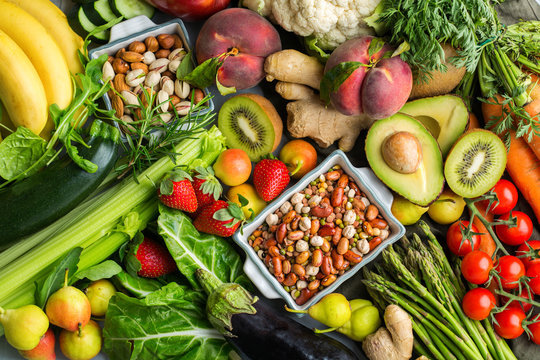
The Alkaline Diet: A Healthy Eating Plan for Optimal Wellness
The alkaline diet has become an increasingly popular way of eating that promotes overall health and wellness. This eating plan focuses on foods that help balance your body's pH levels to create an environment that supports healthy cells and tissues.
What is the Alkaline Diet?
The alkaline diet is based on the principle that the foods you eat can alter your body's pH balance and impact your health. The ultimate goal is to create an internal environment that has a pH ranging from 7.35 to 7.45, which is slightly alkaline.
Foods are categorized as either acidic, alkaline, or neutral:
Alkaline foods - Fruits, nuts, legumes, and vegetables
Acidic foods - Meat, dairy, eggs, grains, alcohol, and processed foods
Neutral foods - Natural fats, starches, and sugars
By emphasizing alkaline foods and limiting acidic foods, proponents of this diet believe it can help neutralize chronic low-grade acidosis linked to inflammation, fatigue, and increased disease risk.
Benefits of an Alkaline Diet
Following an alkaline diet offers impressive benefits:
Promotes pH balance
Reduces inflammation
Boosts immunity
Increases energy
Aids weight loss efforts
Improves cardiovascular health
Strengthens bones
Detoxifies the body
The diet focuses on nutrient-dense whole foods that provide antioxidants, vitamins, minerals, fiber, and water to help neutralize acids and remove toxins from the body.
Balances pH Levels
One of the main goals of the alkaline diet is to balance the body's pH levels. Chronic low-grade acidosis happens when acidic wastes accumulate in the body faster than they can be neutralized. This causes the body's pH to drop into unhealthy ranges.
The alkaline diet counteracts this acidity and helps:
Regulate fluids and electrolytes
Filter out toxins and wastes
Transport nutrients into cells
Together this provides an ideal environment for cells and systems to function properly.
Reduces Inflammation
Acidosis creates an environment inside the body that promotes inflammation, a key factor in many chronic diseases.
The anti-inflammatory foods emphasized on the alkaline diet can help reduce acidity and calm this internal fire. Some examples include:
Fruits high in vitamin C
Green leafy vegetables
Nuts like almonds and walnuts
Plant-based proteins like lentils and beans
Lower levels of inflammation helps people feel better day-to-day. But even more importantly, it lowers the risk for disorders caused by chronic inflammation.
Other Key Benefits
Some other top reasons to follow the alkaline diet include:
Increased Energy Levels - A balanced pH provides cells with ideal conditions for producing energy.
Healthy Weight - The diet emphasizes low energy-density foods that support weight loss.
Strong Bones - The diet provides bone-building nutrients often lacking in modern diets.
Detoxification - Alkaline foods help remove acidic waste products and toxins.
Together this creates an internal terrain that discourages damaged cells and chronic diseases from taking root.
The Best Alkaline Foods to Eat

Focus your diet around these alkaline superfoods:
Fruits
Fruits are packed with alkaline-promoting nutrients. Choose fresh or frozen organic when possible. Top picks include:
Lemons
Watermelon
Apple
Grapefruit
Kiwi
Berries
Papaya
Pears
Vegetables
Aim for eating a variety of organic vegetables each day. Great options include:
Spinach
Kale
Cucumbers
Celery
Carrots
Sweet potatoes
Broccoli
Sea vegetables
Nuts and Seeds
Nuts and seeds are excellent sources of protein and healthy fats. Soak nuts before eating to boost nutrients. Try:
Almonds
Flaxseeds
Pumpkin seeds
Sunflower seeds
Chestnuts
Chia seeds
Herbs, Spices and Oils
Boost flavor and pH with these additions:
Lemongrass
Ginger
Turmeric
Cinnamon
Garlic
Cold-pressed olive oil
Coconut oil
Avocado oil
Foods to Avoid on the Diet

To balance your pH effectively, you’ll also want to avoid or limit these acidic foods:
Red meat
Poultry
Seafood
Eggs
Dairy products
Processed grains
Sugar
Packaged snacks
Soda
Alcohol
Coffee
Even whole grains and beans - two staples of healthy diets - should be eaten sparingly since they skew acidic.
Additional Tips for Success
Follow these suggestions to make the most of an alkaline diet:
Stay well hydrated with alkaline water
Enjoy herbal teas
Reduce stress through yoga, meditation, etc.
Exercise at least 30 minutes daily
Add more raw foods slowly
Focus on how you feel
As with any significant change to your diet, implement this eating pattern gradually. This gives your body time to adjust its complex systems. Pay attention to the signals your body is sending about the changes.
Over time, you should feel less internal "discomfort" and more vibrant energy. Chronic issues you learned to tolerate could show improvement or fade away completely.
The Bottom Line
The emerging research shows an alkaline diet may be an extremely healthy way to prevent damage from modern diets and lifestyles. While studies continue, adjusting your eating pattern to favor alkaline foods poses little risk and offers tremendous potential.
It provides a sustainable, nutrient-dense approach to eating that fights inflammation and encourages good health starting on the inside!
Doctor Sebi Cell Food Diet Explained: Components, Purported Benefits, Controversy & Safety Reviewed
Read the full article
8 notes
·
View notes
Note
I wonder what chocolate Mikan is giving Hajime, bear in mind he’s already traumatised by Hiyoko’s attempts at making traditional chocolate, in the Mesoamerican sense.





This is...

Wow, what is this? It's...kinda savory but really sweet too? But not like the chocolate I had earlier?

Kyahaha! He did notice!

Notice what?

Well, we wanted to do something a bit different from the usual candy you get this year. We made some honey-sweetened dark chocolate.

Both of them are tasty and they have excellent health benefits!

D-Do you like it?

Yeah...this is really tasty.

Hehehe! I'm so glad!

Kotoko was the one who recommended we add honey.

It's not as good as unpeeled chestnuts, but it's really tasty!
#danganronpa#udg#ultra despair girls#sdr2#super danganronpa 2#hajime hinata#mikan tsumiki#kotoko utsugi#a student out of time#DR#valentine's day arc
10 notes
·
View notes
Text
Black Forest Honey: A German Folklore and Tradition

In Germany, the Black Forest is a well-known holiday destination. The region is home to many different traditions and folklore, one of which is the production of Black Forest honey.
The honey is made using a traditional method that has been passed down from generation to generation of beekeepers.
The bees collect nectar from the flowers of the Black Forest, which gives the honey its unique flavour. Black Forest honey's flavour and aroma can range from sweet and syrupy to spicy and earthy, depending on the flowers used. It is thick and a distinctive dark brown tint.
The History and Folklore of Black Forest Honey
The region of Black Forest in Germany has a long history and tradition with honey. For centuries, this honey has been used for both culinary and medicinal purposes in the region. In German folklore, it was believed that a good beekeeper could bring luck, health, and fortune to a family. It was also seen as protection from thunder and lightning, which was very important in the area.
The production of black forest honey in Germany did not begin until the late 1700s when forestry expanded greatly and local beekeepers started to produce honey from the native linden, acacia and chestnut flowers in the area.
In modern times, black forest honey is seen as a symbol of German pride and tradition. It is used in a variety of recipes, especially desserts and baked goods. It is also used in many health and beauty products, such as soaps, lotions, and lip balms. People who live in the Black Forest region often seek out local honey producers who specialise in this type of honey.
Black Forest Honey Tradition
Black Forest honey has been an integral part of the culture and tradition of Germany for centuries. It was used as a medicine to alleviate ailments and as a sweetener in recipes and desserts.
In Germany, there are traditional cures involving the use of black forest honey and holy water. This remedy was said to be used to cure everything from snakebites to tuberculosis. This remedy was commonly used by Bavarian farm labourers and millers.
In addition to this, Black Forest honey has been used in religious ceremonies in Germany for centuries. During the festivities of Walpurgis Night, Black Forest honey was often used to sweeten the food that was served. It was also a popular ingredient in traditional German wedding cakes.
Black Forest honey has also been the subject of many folk tales that have been passed down through generations. One such story tells of a giant who lived deep in the Black Forest and used chunks of honeycomb to sweeten his beer.
The Benefits of Black Forest Honey
A tasty and wholesome supplement to any diet is black forest honey. It offers a variety of advantages in addition to having a distinctive flavour. The advantages of black forest honey include the following:
It is a good source of antioxidants, which help to protect against cellular damage in the body.
It is rich in vitamins and minerals, including B vitamins, magnesium, iron, and zinc.
It can help to reduce inflammation in the body, which may help to reduce the risk of certain diseases.
It has been shown to help regulate blood sugar levels, which can aid in weight management.
It can help boost the immune system by providing powerful antibacterial and antiviral effects.
It can promote gut health by providing beneficial prebiotics and probiotics.
These are only some of the possible advantages of black forest honey. Therefore, black forest honey is the perfect addition to your diet if you're looking for something tasty and healthy.
Thus, black forest honey from Geohoney is a fantastic choice to take into account whether you're wanting to add a natural sweetness to your recipes or searching for a natural remedy for a medical ailment. Try experimenting with this unique flavoured honey right now to see what new dishes you can create.
2 notes
·
View notes
Text


Take Action to Stop a SCOTUS Case That Will Undermine Medicaid & Other
Safety Net Programs!
Talevski v. HHC, an Indiana nursing home case, is headed to the U.S. Supreme Court (SCOTUS) that could roll back an individual’s ability to sue to enforce their civil rights in the United States, harming tens of millions of Americans, especially disabled Hoosiers, Medicaid members, and those of us enrolled in other social safety net programs!
This Indiana case could impact millions of people around the country because the US Supreme Court could roll back decades of legal precedent which grants court access to vulnerable populations. With Talevski, the Supreme Court could cut off the right to go to court if state officials unlawfully deny, reduce, or terminate benefits guaranteed by federal law. This would make it nearly impossible to hold state and local governments accountable for violating the rights of those depending on federally funded safety net programs. It would also jeopardize the legal avenues available to victims of nursing home abuse, like Gorgi Talevski, the plaintiff in the case.
You can help stop this case by urging Health and Human Hospital Corporation of Marion County (HHC) to hold a special emergency meeting to take necessary actions to withdraw this case!
Dear J,
Thank you for taking action to help protect the civil rights of Americans on social safety net programs! You can help by sharing this petition with others.
You can use this template and links to share with friends and family so they can take action too!
Hi Friend,
There's a big Supreme Court case that is going to have a huge impact on social safety net programs. It's called HHC v. Talevski. Basically, if heard by the Supreme Court this fall, it will strip our individual right to sue to enforce our civil rights when community members are trying to access things like Medicaid, Medicare, SNAP, TANF, and other social support programs. I'm supporting efforts to stop this from happening by getting HHC to withdraw the case. Would you be willing to support me?
Here's how you can help us stop this case by:
Signing on and sharing our letter to urge HHC to withdraw here.
Text HHC to 52886 or visit https://www.citact.org/hhc to write to HHC directly.
Share or create posts using the hashtags #Talevski and #Protect504. Tag HHC board members in your posts.
Share what these programs and your rights mean to you on social media.
Follow us on social media to stay updated: @bazeloncenter @hoosieraction @cacindiana
ShareTweet
Show your support
with a single click
Autofill forms quickly and securely with FastAction
Sign up with your email address
Or sign up using Facebook or Twitter
Already have a FastAction account? Log in
×
Show your support
with a single click
Autofill forms quickly and securely with FastAction
Log in with your email address
Or log in using Facebook or Twitter
Don't have a FastAction account yet? Sign up
×
BACK TO TOP
DONATE
Seymour Office:
113 N. Chestnut St.
Seymour, IN 47274
Bloomington Office:
1461 W. Bloomfield Rd
Bloomington, IN 47403
Mailing Address:
P.O. BOX 469
New Albany, IN 47150
© 2022 - Hoosier Action
5 notes
·
View notes
Text
What are the 5 Health Benefits of Eating Nuts and Seeds?
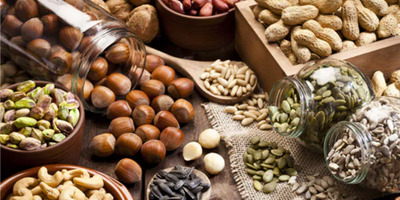
You may have heard the phrase "the idol is small, but the fame is large."
Nuts and seeds, for example, are small in size but provide numerous health benefits. They are high in protein, good fats, fibre, vitamins, and minerals.
There are numerous advantages to including nuts and seeds in our daily diet.
Let me explain the advantages of eating nuts and seeds in more detail below.
1. Nuts and Seeds are healthy source of many nutrients
Nuts and Seeds are highly nutritious. They are a good source of many minerals, including selenium, magnesium, and vitamin E. They are also high in fat and low in carbohydrates.
10gms mixed nuts contains:
Calories- 62
Fat- 5.63g
Carbs- 2.16g
Protein-1.65g
Polyunsaturated Fat1.293g
Monounsaturated Fat3.198g
Calcium11mg -1%
Iron0.31mg – 2%
Potassium57mg – 1%
2.High contents of antioxidants
For a daily dose of antioxidants, foods including nuts, berries, spices, fruit, and vegetables are excellent sources. Antioxidants may aid in the prevention of cancer, safeguard the heart, and neutralize free radicals that harm cells. Foods high in antioxidants are excellent for glowing skin.
The tree nuts with the highest antioxidant content include walnuts, pecans, and chestnuts. More than 20 mmol of antioxidants are present in walnuts per 100 g, primarily in the walnut pellicles. An important source of antioxidants in the diet is the legume peanuts.
3.Helps in reducing inflammation
Unsaturated fat and other anti-inflammatory elements are abundant in nuts & seeds.
Your body uses inflammation as a defence mechanism against damage, bacteria, and other potentially hazardous invaders. Because of the high concentration of phenolic chemicals in the seeds, especially in the pellicle, regular nut eating is predicted to have an anti-inflammatory impact.
Pistachios, Brazil nuts, walnuts, and almonds are among the nuts that have been reported to reduce inflammation in both healthy people and people with significant illnesses including diabetes and kidney disease.
Vitamin E and other phytonutrients like phenolic acids, tannins, and flavonoids are among the many anti-inflammatory vitamins and antioxidants that are abundant in walnuts.
4. Reduce cholesterol levels
Managing cholesterol is another critical function of nuts. According to research, consuming nuts at least a few times each week directly correlates with lower triglyceride and LDL cholesterol levels.
Lower risk of stroke or cardiovascular disease is linked to improved cholesterol. Due to their high concentration of monounsaturated and polyunsaturated fatty acids, nuts may have the ability to reduce cholesterol.
Pistachios have been demonstrated to reduce triglycerides in obese and diabetic individuals.
5. Lower risk of heart attack and stroke
Consuming nuts as part of a heart-healthy diet may be beneficial. Unsaturated fatty acids and other nutrients can be found in nuts. According to study, regularly consuming unsalted nuts like walnuts, almonds, and pistachios significantly reduces the chance of dying from heart attacks and strokes. According to research, people who ate nuts at least twice a week had a 17% lower risk of dying from cardiovascular disease.
Regularly consuming nuts as part of a balanced diet may:
• Enhancing artery health
• Lower heart disease-related inflammation
• Lessen your chance of developing blood clots, which can cause heart attacks and strokes.
• Reduce your risk of developing high blood pressure
• Reduce the chance of developing heart disease and dying young.
Why late? Practice incorporating nuts it into your diet every day.
Regular consumption of nuts and seeds benefit your health in a variety of ways, including by lowering your risk of diabetes, heart disease, and blood triglyceride and cholesterol levels. Despite having a high calorie count, this nourishing, high-fiber treat can even help you lose weight. Nuts & Seeds are a pleasant addition to a nutritious, well-balanced diet as long as you consume them in.
2 notes
·
View notes
Text
Natural and Effective Varicocele Treatment Without Surgery
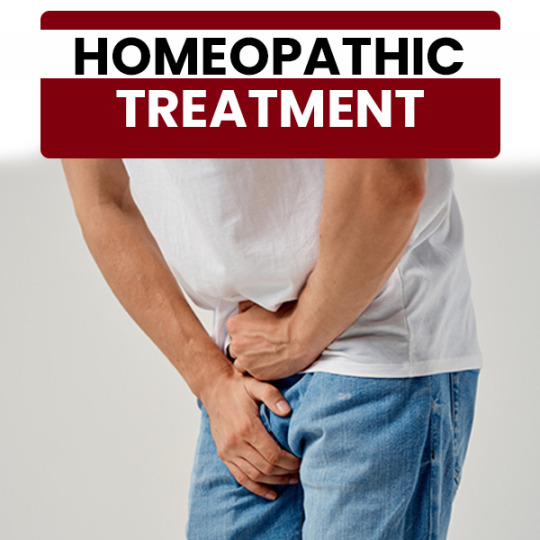
Varicocele, a condition characterized by the enlargement of veins within the scrotum, can lead to discomfort and fertility issues. While surgical options exist, many seek non-invasive methods to treat varicocele. This article explores the best varicocele treatment without surgery, emphasizing natural remedies and homeopathic approaches that have shown promising results.
Understanding Varicocele
Varicocele is similar to varicose veins but occurs in the scrotum. It can cause pain, swelling, and sometimes lead to infertility by affecting sperm production and quality. Traditional treatments often involve surgery, but there are best varicocele treatment is non-surgical, natural treatments that can alleviate symptoms and improve overall scrotal health.
Best Varicocele Treatment Without Surgery
1. Lifestyle Modifications
Adopting a healthy lifestyle is crucial for the best varicocele treatment. Regular exercise, maintaining a healthy weight, and avoiding activities that exacerbate symptoms can help. Specifically, exercises that improve blood circulation and reduce pressure on the veins in the scrotum are beneficial.
2. Dietary Changes
A diet rich in antioxidants, such as fruits and vegetables, can improve blood flow and reduce inflammation. Foods high in fiber and low in unhealthy fats can help maintain a healthy vascular system, which is essential for varicocele treatment without surgery.
3. Herbal Remedies
Several herbs are known for their vascular health benefits. Horse chestnut, known for strengthening veins, and Gotu Kola, which improves circulation, are often recommended. These herbs can be taken as supplements or used in topical applications to reduce varicocele symptoms.
Varicocele Natural Treatment Options
1. Cold Therapy
Applying cold packs to the affected area can reduce swelling and pain. This simple home remedy can be done daily to manage discomfort.
2. Pelvic Floor Exercises
Varicocele natural treatment is strengthening the pelvic floor muscles can improve blood flow and reduce varicocele symptoms. Exercises like Kegels are particularly effective in this regard.
Homeopathic Medicine for Varicocele
Homeopathic medicine for varicocele offers various treatments for varicocele, focusing on individual symptoms and overall health.
Varicocele Treatment in Homeopathic Medicine
Varicocele treatment in homeopathic medicine are tailored to individual needs, considering specific symptoms and overall health. A homeopathic practitioner can provide personalized treatment plans that include remedies like Arnica, Calcarea Fluorica, and Hamamelis Virginiana, enhancing the body's natural healing process and providing relief from varicocele symptoms.
Combining Natural and Homeopathic Treatments
Integrating lifestyle changes, natural remedies, and homeopathic varicocele treatment can offer a comprehensive approach to varicocele treatment without surgery. This holistic approach addresses the root cause of varicocele, improves vascular health, and alleviates symptoms effectively.
Conclusion
Opting for natural and homeopathic varicocele treatment without surgery can be a safe and effective way to manage this condition. Through lifestyle modifications, dietary changes, herbal remedies, and targeted homeopathic treatments, individuals can find relief and improve their overall well-being. Always consult with a healthcare professional before starting any new treatment regimen to ensure it is appropriate for your specific situation.
#varicocele treatment without surgery#best varicocele treatment#varicocele natural treatment#homeopathic medicine for varicocele
0 notes
Text
National Nature Reserve Expansion Safeguards Trees

A major expansion of the Moccas Park and Gillian’s Wood National Nature Reserve in Herefordshire has been announced by the UK government. This initiative aims to protect ancient oaks and sweet chestnut trees that are hundreds of years old, ensuring their survival for future generations. The reserve's area will increase by 100 hectares, creating a sanctuary for diverse wildlife and preserving historical woodlands.
Ancient Trees and New Beginnings
Moccas Park, already renowned for its ancient oaks, is now joined by Gillian’s Wood to form an expanded National Nature Reserve. This expansion is not just about enlarging the territory but also about restoring and preserving vital ecosystems. The newly named reserve combines the historic Moccas Park with Woodbury Hill Wood, now managed by the Woodland Trust, thanks to support from a Herefordshire family.
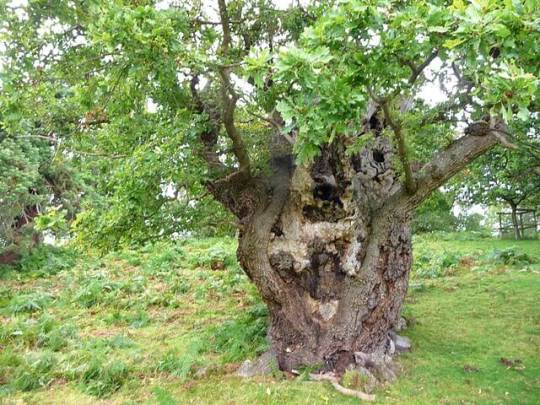
Old Man of Moccas. Photo by the Ancient Tree Forum. Facebook.
Importance of the Reserve
The reserve is home to some of the UK’s oldest trees, including the legendary “Old Man of Moccas,” an oak tree believed to be over 850 years old. These ancient trees are invaluable not only for their historical significance but also for the biodiversity they support. The restoration efforts will benefit various species, including bats, beetles, and dormice, making this reserve a crucial habitat for wildlife.
Restoration Efforts
Natural England and the Woodland Trust are spearheading the restoration of the woodlands. The expansion includes the transformation of Moccas Hill Wood into wood pasture and the revival of Woodbury Hill Wood as ancient woodland. These efforts involve carefully removing conifer trees planted in the 1950s to give space for native species, thus allowing the ancient trees to thrive.

Woodland & information board Woodbury Hill. Photo by Colin Park. Geograph.
Actions and Outcomes
The restoration of these woodlands involves several critical actions aimed at enhancing the health of the ecosystem. These include increasing light to the forest floor, which will help native plants and trees re-establish themselves.
Additionally, the removal of non-native conifers will create a more conducive environment for the ancient trees and the species that depend on them.
Action
Description
Outcome
Conifer Removal
Gradual removal of 1950s conifer trees
Space for native species and ancient trees to thrive
Light Enhancement
Increasing light penetration to the forest floor
Growth of native flora
Ancient Tree Survey
Tagging and initial management of surviving ancient trees
Ensured survival and proper care
Wildlife Monitoring
Continuous monitoring of local wildlife
Improved habitat conditions
Quotes from Key Figures
Emma Johnson, West Midlands Deputy Director for Natural England, highlighted the historical importance of the trees:
“The amazing ancient trees in Moccas Park and Gillian’s Wood date back hundreds of years to medieval times and beyond and provide rich and varied spaces for many species, including the Moccas beetle found at only one other site in the UK.”
Richard Brown, Site Manager of the Woodland Trust, emphasized the significance of the restoration efforts:
“Ancient Woods have been around since at least the 1600s and cannot be replaced. Gradually removing the conifer trees will allow light to reach the woodland floor and the plants, trees and associated wildlife found within an ancient woodland will start to establish themselves once more.”
The Legacy of Gillian Bulmer
Gillian’s Wood is named in memory of Gillian Bulmer, a strong advocate for woodlands and trees. Her brother, John Bulmer, and the trustees of her will supported the Woodland Trust in acquiring and restoring Woodbury Hill Wood. This dedication ensures that her love for nature continues to inspire and protect these ancient landscapes.
John Bulmer expressed his sentiments on the dedication:
“Being able to support the Woodland Trust to buy and restore this ancient woodland in Gillian’s memory feels very fitting. She was a strong advocate for woods and trees throughout her life and the designation of the National Nature Reserve in the county where she loved feels very poignant.”

Chicken of the woods. Photo by We Like Sharing. Flickr.
Enhancing Wildlife Habitat
The expansion of Moccas Park and Gillian’s Wood National Nature Reserve is not only a victory for historical preservation but also a boon for wildlife. The reserve supports over 1,000 species of fly, 700 species of beetle, and 13 out of the 18 UK bat species. Birds, including all three types of woodpeckers and the nationally significant Pied Flycatchers, find sanctuary here.
Public Access and Engagement
The reserve is largely open to the public, offering spectacular views of the Herefordshire landscape. Visitors can explore Gillian’s Wood and Moccas Hill Wood freely, while guided walks and open days at Moccas Park will enhance public engagement and appreciation of these ancient woodlands.
In Conclusion
The expansion of the Moccas Park and Gillian’s Wood National Nature Reserve marks a significant step in preserving the UK's natural heritage. By safeguarding ancient trees and enhancing wildlife habitats, this initiative ensures that future generations can enjoy and learn from these remarkable landscapes.
The combined efforts of Natural England and the Woodland Trust, supported by the local community, underscore the enduring value of conservation and historical preservation.
For more information about the Moccas Park and Gillian’s Wood National Nature Reserve and upcoming events, visit the Natural England website or contact the Woodland Trust.
Sources: THX News, Natural England & Department for Environment, Food and Rural Affairs.
Read the full article
#ancientoaks#ancienttrees#Gillian'sWood#Herefordshirenaturereserve#MoccasPark#NaturalEngland#thxnews#wildlifehabitat#woodlandrestoration#WoodlandTrust
0 notes
Text
Chestnuts: Health and Wellness
Chestnuts are edible nuts produced by the trees and shrubs of the Castanea genus, which are commonly found throughout the northern hemisphere. While there are a number of different species of chestnuts, most of them possess similar qualities and nutritional profiles Chestnuts are good for health as it provides high levels of dietary fiber, minerals, ‘good’ fats, vitamins, nutrients, antioxidant compounds and these article we are discussing the health benefits of chestnuts.
Health Benefits of Chestnuts
Prevent Diabetes: Many people are unaware of the significant role that dietary fiber can play in the regulation, prevention, and management of diabetes. This helps prevent the spikes and drops in blood sugar that can be dangerous for diabetic patients, and are often precursors to the development of diabetes in those currently unaffected.
Boost Immune System: The high concentration of vitamin C and other antioxidant compounds in chestnuts make them an ideal boost to your immune system. This can help the immune system focus on pathogens and preventing illnesses.
Increase Bone Mineral Density: Copper and magnesium aren’t the first things that one thinks of when it comes to bone health, but copper is extremely important in the process by which the body absorbs iron, which is also crucial for bone growth and development.
Relieve Digestive Issues: Chestnuts have one of the highest content of dietary fiber in the world of “nuts”, which means that they are powerful allies in any gastrointestinal struggle. Dietary fiber helps stimulate peristaltic motion in the intestines, thus regulating your bowel movements and preventing inflammation and discomfort.
Improve Brain Function: Brain function and cognition are improved in a number of ways through the consumption of chestnuts. Furthermore, the potassium found in chestnuts can increase blood flow to the brain and promote good nervous system health, thus increasing concentration, retention, and memory.
Prevent Chronic Illnesses: Chronic illnesses of all kinds are caused by the release of free radicals, the natural by-products of cellular respiration. These can cause healthy cells to mutate, resulting in cancer, oxidative stress, and a number of chronic illnesses
Blog Source: https://www.kayawell.com/Food/7-Best-Benefits-Of-Chestnuts-diabetes-type-ii-immune-inflammatory-and-infections
#water chestnuts nutrition#water cashew nut#water chestnut benefits#benefits of chestnuts#chestnut health benefits#chestnut benefits#are chestnuts good for you#chestnut nutritional value#chestnuts carbs
0 notes
Text
Venapro Hemorrhoids Treatment

Venapro Homeopathic Hemorrhoid Treatment Review: Hemorrhoids can be a painful and uncomfortable condition, affecting millions of people worldwide. While there are various treatment options available, many individuals seek natural remedies to alleviate their symptoms. In this comprehensive review, we will explore the effectiveness of Venapro, a homeopathic hemorrhoid treatment that claims to provide relief without the side effects associated with conventional medications.
Check Latest Price
Understanding Hemorrhoids:
Before delving into the Venapro review, it’s crucial to understand what hemorrhoids are and why they occur. Hemorrhoids, also known as piles, are swollen veins in the rectum and anus that can cause pain, itching, and bleeding. Factors such as straining during bowel movements, obesity, and a sedentary lifestyle can contribute to their development. Traditional treatments often involve creams, ointments, or surgical procedures, but natural alternatives like Venapro are gaining popularity among those seeking a gentler approach.

Venapro Homeopathic Formula:
Venapro is a homeopathic hemorrhoid treatment that combines natural ingredients to address the root causes of hemorrhoids. The two-part system includes an oral supplement and a spray application. The oral supplement contains a blend of natural ingredients, such as horse chestnut, arnica, and witch hazel, known for their anti-inflammatory and vein-strengthening properties. The spray, applied under the tongue, contains ingredients like St. Mary’s thistle and fluoride of lime, believed to enhance the overall effectiveness of the treatment.
The oral supplement aims to improve vascular health, reduce inflammation, and promote overall well-being, while the spray works to deliver key ingredients directly into the bloodstream for faster relief. This dual-action approach distinguishes Venapro from other hemorrhoid treatments on the market.
Check Latest Price
Effectiveness and Results:
Numerous users have reported positive experiences with Venapro, noting a reduction in pain, itching, and bleeding associated with hemorrhoids. The natural ingredients are thought to work synergistically to address both the symptoms and underlying causes of hemorrhoids. However, individual responses may vary, and it’s essential to follow the recommended dosage and application instructions for optimal results.
It’s worth noting that while some users experience relief within a short period, others may require more time for the full benefits of Venapro to manifest. Consistency in usage and adherence to a healthy lifestyle, including a high-fiber diet and regular exercise, can contribute to the effectiveness of the treatment.
Safety and Side Effects:
One of the significant advantages of Venapro is its homeopathic nature, which typically translates to fewer side effects compared to conventional medications. The natural ingredients used in Venapro are generally well-tolerated, but individuals with allergies or sensitivities to specific components should consult a healthcare professional before use.
Check Latest Price
Frequently Ask Question on Venapro Homeopathic Hemorrhoid treatment review:
Is Venapro safe to use, considering it’s a homeopathic treatment?
Venapro is generally considered safe due to its homeopathic nature. The natural ingredients used in the formulation are chosen for their safety profile, and the product is designed to minimize the risk of adverse effects.
2. How does Venapro work to treat hemorrhoids?
Venapro works through a dual-action approach. The oral supplement aims to improve vascular health, reduce inflammation, and strengthen veins. The spray application, when used under the tongue, delivers key ingredients directly into the bloodstream for faster relief.
3. What are the main ingredients in Venapro, and how do they contribute to its effectiveness?
Venapro contains a blend of natural ingredients, including horse chestnut, arnica, witch hazel, St. Mary’s thistle, and fluoride of lime. These ingredients are chosen for their anti-inflammatory properties, vein-strengthening effects, and overall ability to address the symptoms and causes of hemorrhoids.
4. How long does it take for Venapro to show results?
Individual responses to Venapro may vary. While some users report relief within a short period, others may require more time. Consistent usage, adherence to recommended dosage, and maintaining a healthy lifestyle can contribute to the effectiveness of the treatment.
5. Are there any side effects associated with Venapro?
Generally, Venapro is well-tolerated due to its natural composition. However, individuals with allergies or sensitivities to specific ingredients should consult a healthcare professional before using the product to ensure its safety for their unique circumstances.
6. Can Venapro be used for both internal and external hemorrhoids?
Yes, Venapro is designed to address both internal and external hemorrhoids. The dual-action formula aims to provide comprehensive relief for a range of hemorrhoid symptoms.
7. Is Venapro suitable for pregnant or breastfeeding women?
Pregnant or breastfeeding women should consult with their healthcare provider before using Venapro or any other hemorrhoid treatment to ensure its safety during this specific period.
8. Can Venapro be used as a preventive measure for hemorrhoids?
While Venapro is primarily designed to address existing hemorrhoids, its natural ingredients may contribute to overall vascular health. However, it’s essential to consult with a healthcare professional for personalized advice on preventive measures.
9. Is Venapro available over-the-counter, or do I need a prescription?
Venapro is typically available over-the-counter, and a prescription is not required. However, individuals with pre-existing health conditions or concerns should consult with a healthcare professional before starting any new treatment.
10. How should Venapro be incorporated into a daily routine for optimal results?
Following the recommended dosage and application instructions is crucial for optimal results with Venapro. It is also advisable to maintain a healthy lifestyle, including a balanced diet and regular exercise, to enhance the overall effectiveness of the treatment.
Conclusion:
In conclusion, Venapro offers a promising natural alternative for individuals seeking relief from hemorrhoid symptoms. The combination of oral supplements and a spray application sets it apart in the market, providing a holistic approach to address both the symptoms and underlying causes of hemorrhoids. While results may vary among individuals, the majority of users report positive outcomes, making Venapro a viable option for those looking to manage their hemorrhoids without resorting to more invasive treatments. As with any health product, it’s advisable to consult with a healthcare professional before starting a new regimen
#Venapro-Hemorrhoids
1 note
·
View note
Text
Chestnut Mushroom
Chestnut mushrooms, also known as brown mushrooms or cremini mushrooms, are a popular variety of edible mushrooms with a mild, earthy flavor. They are similar in appearance to white button mushrooms but have a slightly firmer texture and a deeper, more robust flavor.
Here are some key characteristics and culinary uses of chestnut mushrooms:
Appearance: Chestnut mushrooms have a round or slightly convex cap with a rich brown color. When young, their caps are tightly closed, but as they mature, they open up to reveal their gills underneath. The stems are firm and creamy-white in color.
Flavor: These mushrooms have a savory, nutty flavor with subtle earthy undertones. They are milder in flavor compared to shiitake or portobello mushrooms, making them versatile for various dishes.
Culinary Uses: Chestnut mushrooms can be used in a variety of culinary chestnut mushroom substitute applications. They are delicious when sautéed, roasted, grilled, or added to soups, stews, pasta dishes, omelets, and risottos. They pair well with herbs like thyme, rosemary, and parsley, as well as ingredients like garlic, onions, and cheese.
Nutritional Benefits: Like other edible mushrooms, chestnut mushrooms are low in calories and fat and are a good source of protein, fiber, vitamins (such as B vitamins), and minerals (such as potassium and selenium). They also contain antioxidants and other beneficial compounds that support overall health.
1 note
·
View note
Text
Discover The Benefits Of Singhara Atta For Holistic Well-being
Singhara atta, or water chestnut flour, is a powerhouse for holistic well-being Discover its nutrient-rich benefits and gluten-free goodness for a healthy lifestyle. Elevate your meals with this versatile, wholesome flour. Try Singhara atta for a natural boost today.
Center Pure, SCO-3363A, Block C, Near SOS Children Village,
Greenfields, Sector-41, Faridabad, Delhi NCR, INDIA,121003
0 notes
Text
Author: Diksha Kumari
Roll No: 22/5420
Examination roll no: 22019553006
MEDICINAL MUSHROOM: CHAGA
The local medicinal mushroom! There are many shrooms with medicinal properties, but let’s just say this one is having a moment.. Finally, after a few thousand years of use! It has recently exploded in popularity in the west thanks to the wide array of purported health benefits from boosting the immune system, stopping tumors, stomach trouble and allergies to anti-aging.. Inonotus Obliquus, it is a parasitic mushroom that feeds on mature birch trees in northern climes. It is hard as a rock, so not a mushroom to sauté up for dinner, more like a tonic, generally consumed as an infusion or in powder form.
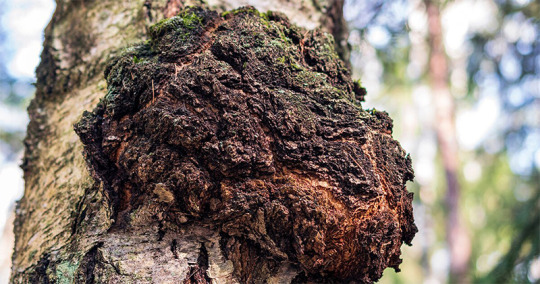
Chaga growing on Yellow Birch
(Betula alleghaniensis)
HOW TO HARVEST SUSTAINABLY
Never take all the chaga from the tree- it should barely even look like you were there after you harvest. Unlike most mushrooms, which are the fruiting body of the mushroom organism, the Chaga that we harvest is actually a mass of mycelium. If we take it all, we kill the mushroom.
HOW TO IDENTIFY IT
Chaga is a polypore mushroom most commonly found on Birch (Betula sp) trees here in the Northeast, although it can also be found on Beech (Fagus sp), Hornbeam (Carpinus sp) , Alder (Alnus sp), and Chestnut (Castanea sp). On this particular day I found it growing on Yellow Birch (Betula alleghaniensis). Identifying Chaga is fairly easy- it looks like a black, almost charred, growth on tree trunks bursting through the bark. Think you have Chaga but not quite sure? First, be sure you've got a Birch tree or another one of Chaga's host trees, next break off a piece and look for a rusty orange-brown interior. If it's got that characteristic color inside, it's Chaga!
THE MEDICINE
Much of what we know of its medicinal use originally comes to use from Russian Folk Medicine, where it is held in high esteem. It has a long history of use for treating many cancers, especially stomach cancer, and also as a tonic, blood-purifier, pain-reliever, restorative and general remedy for all stomach complaints, including gastritis and ulcers.
Modern use of this mushroom in contemporary herbalism echos these traditional uses, and we use it most often today for its anti-tumor effects. Research into its pharmacology has confirmed the presence of immune-modulating polysaccharides, as well as powerful antioxidants. Best used as a long-term tonic, herbalists will often use Chaga in formulas to improve and modulate immune function, to increase vitality, and as both a cancer-preventative and fighter. Chaga really does look like canker growing on the tree, and some folks consider this a Doctrine of Signature pointing to its anti-tumor effects.

CHAGA CLOSE UP
PREPARATION
Chaga is best prepared as a decoction or double extract. Chaga Chai (the Chaga decocted with chai spices) is also a fairly recently popular way to enjoy it.
To make a decoction:
Simmer some small pieces of Chaga in water for anywhere from 5-20 minutes. 1 tsp Chaga: 1 cup water is a good ratio to use. When the Chaga is fresh, the rusty-orange interior (considered to be the most medicinal part) can be fairly easily grated for immediate or later use. Once it's dried it becomes rock-hard and more creative measures need to me employed to break it up. When you buy it at an herb shop it will come "cut and sifted"- already broken into small pieces.
1 note
·
View note